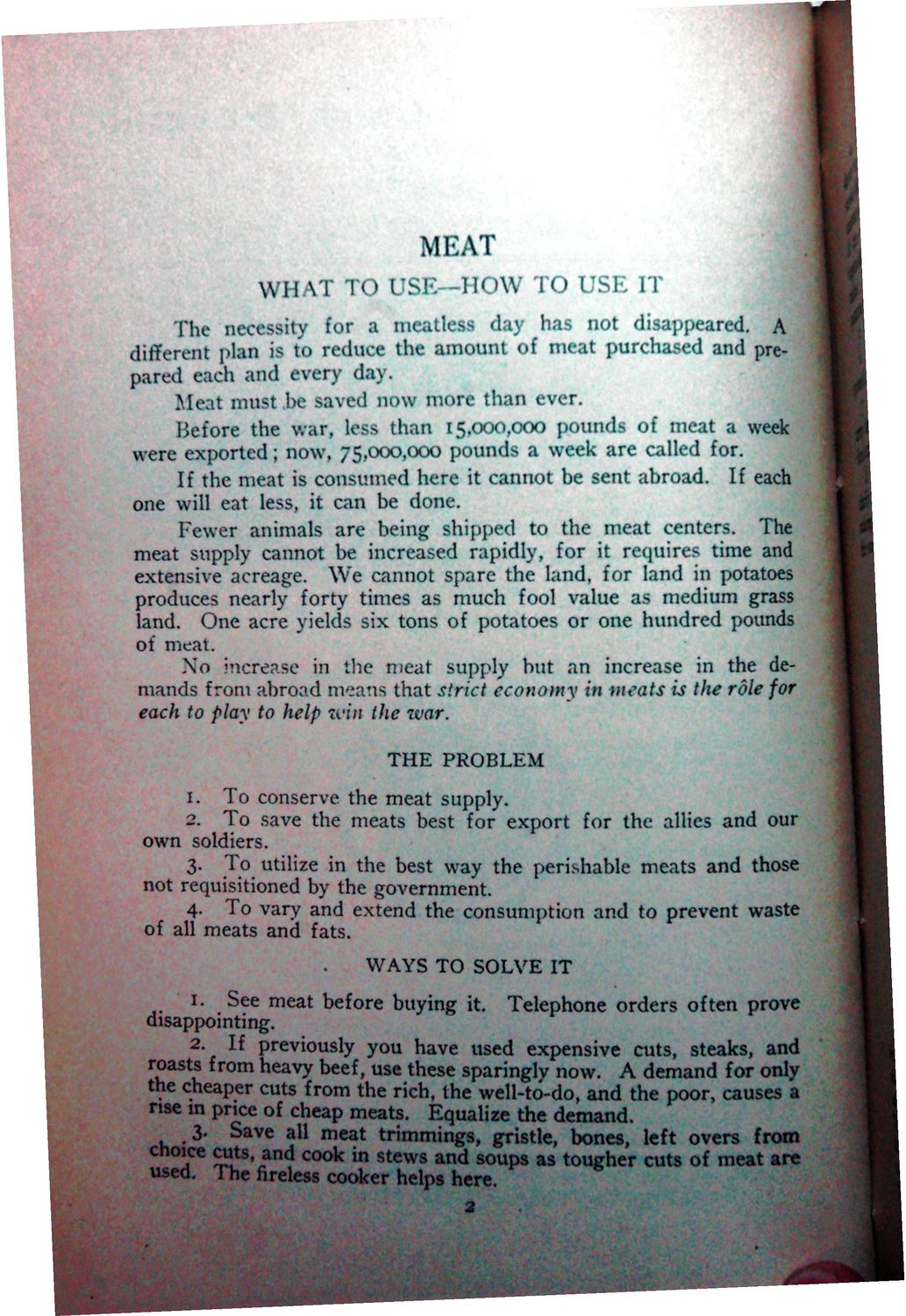Caption: War Publications - WWI Compilation 1923 - Article 10
This is a reduced-resolution page image for fast online browsing.

EXTRACTED TEXT FROM PAGE:
MEAT WHAT TO USE-HOW TO USE IT The necessity for a meatless day has not disappeared. A amount of meat purchased every he sav ;s than 15,000,000 pounds of me; ,000.000 oounds a week are called If the meat is consumed here it cannot be sent abroad. If each one will eat less, it can be done. Fewer animals are being shipped to the meat centers. The meat supply cannot be increased rapidly, for it requires time and extensive acreage. We cannot spare the land, for land in potatoes produces nearly forty times as much fool value as medium grass land. One acre yields six tons of potatoes or one hundred pounds of meat. Xo increase in the meat supply but an increase in the des from abroad means that strict economy in meats is the role for each THE PROBLEM 1. To conserve the meat supply. o and own soldiers. 3. To utilize in the best way the perishable meats and those not requisitioned by the government. 4. To vary and extend the consumption and to prevent waste of all meats and fats. WAYS TO SOLVE IT 1. See meat before buying i t disappointing. 2. Telephone orders often prove steaks heavy demand the cheaper cuts from the rich, the well-to-do, and the poor, causes rise in price of cheap meats. Equalize the demand. 3- Save all meat trimmings, gristle, bones, left overs fro choice cuts, and cook in stews and soups as tougher cuts of meat a used. The fireless cooker helps here. 2
|